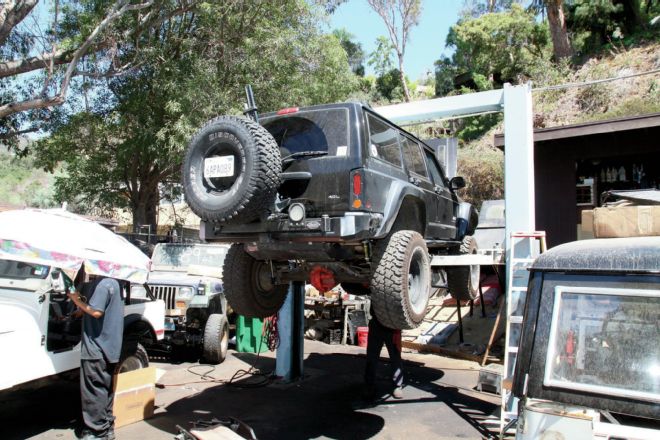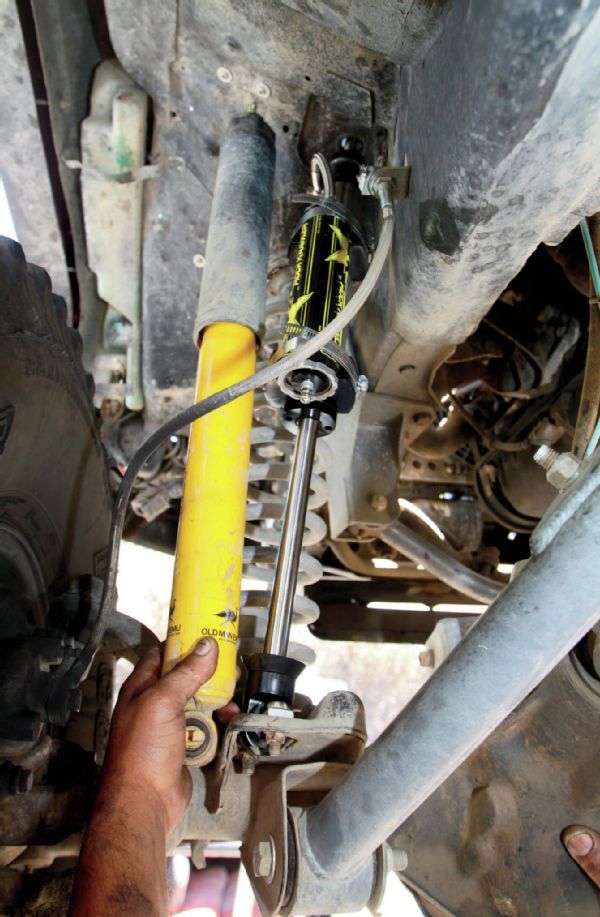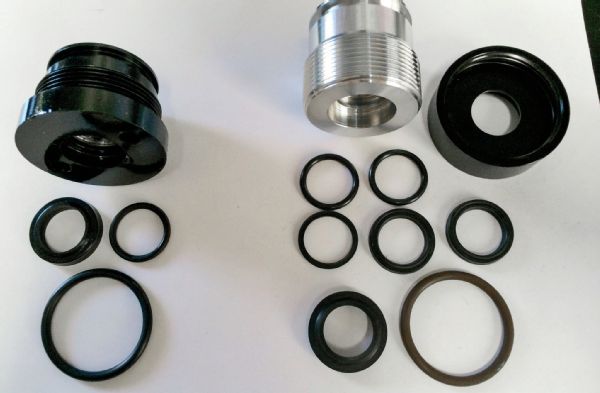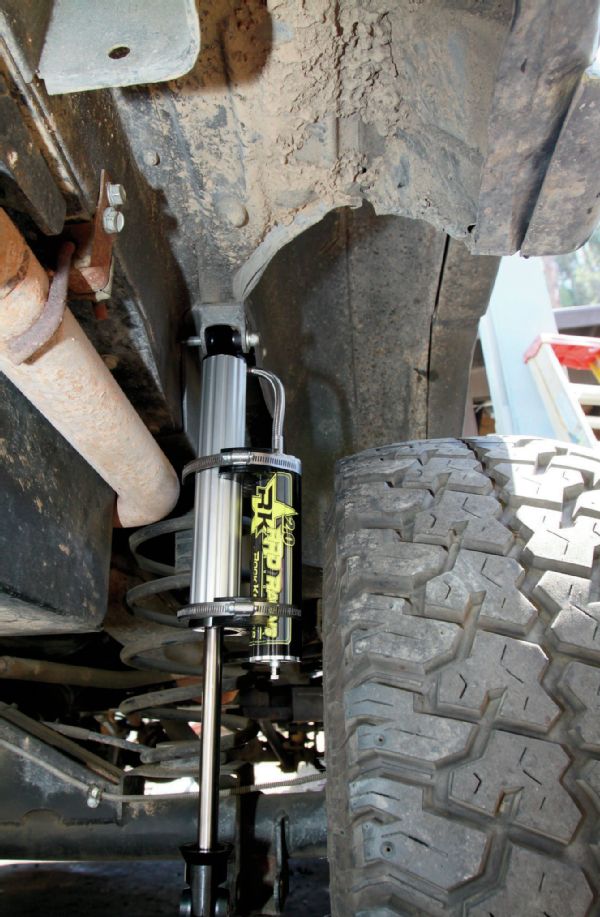
 Pete Trasborg
Brand Manager, Jp
Pete Trasborg
Brand Manager, Jp
When we went up to Wyoming in the summer of 2012 and coil-converted our ’98 XJ (“Round Spring Swap,” Apr. ’13), we upgraded the front shocks to a set of Old Man Emu shocks. But out back, we chinced-out with a set of JK Rubicon take-offs. We have been known to be hard on equipment, and all of the new flex that we had from the TnT Custom’s long-arm coil conversion led to a lot of spirited driving. We had to “test” the suspension, don’t ya know?
Anyway, because of how heavy our Cherokee is, and how we drive it, it was only a matter of months and a few wheeling trips before we had blown the rear shocks. Maybe we should take less stuff with us when we camp. Or drive slower. Or both. Of course, once the rear shocks were shot, we didn’t do anything about it but beat on it harder. In short course, the front shocks were screaming for mercy as well. We knew we needed to do something.
The problem was, most gas-charged sealed shocks on the market were too stiff for our Jeep when it was empty, we couldn’t fit a lot of reservoir shocks on it, and we wanted something that would work with our butt-heavy Jeep. We’ve tried several sets of used shocks we had laying around the garage in this thing, but none of ’em worked.
One day, we were talking to the owner of Rock Krawler, and he started telling us about all the improvements to his shocks. We are running the old version in a ’06 LJ and have been for a few years. We’ve got no complaints, but when the company told us about all the improvements we were intrigued. Changes inside the shock were reputed to change the way it handled abrupt and large bumps, while changes to the shaft and seal package meant it should handle dirt better. The other cool thing about the Rock Krawler RRD shocks is that if they don’t have a valving in the books for your application, you just need to provide some specs on your Jeep, and the company will valve to your needs.
Since our Jeep was heavy in the rear and light up front, that sounded like a plan to us. Plus, if we got it wrong on the first go-through, the company offers one free re-valving. We took the Jeep down to Jeeps R Us in Laguna Beach, California, just in case we ran into any problems on the install. We did a couple of other installations at the same time, which you can see in future issues. For now, here’s some info on the new shocks, how they install, and how they worked out for us.
 Up front, the old Old Man Emu shocks weren’t in that bad of a shape. They held up well to basically controlling the bounce of the Jeep all on their own for over two years, but that abuse still took its toll. Using the lengths we provided, the Rock Krawler shocks bolted right in with little fuss, and the Jeeps R Us crew took, maybe, 30 minutes to get both front shocks swapped out.
Up front, the old Old Man Emu shocks weren’t in that bad of a shape. They held up well to basically controlling the bounce of the Jeep all on their own for over two years, but that abuse still took its toll. Using the lengths we provided, the Rock Krawler shocks bolted right in with little fuss, and the Jeeps R Us crew took, maybe, 30 minutes to get both front shocks swapped out.
 Here are just a few of the modifications of the internal shock components. The new parts are on the right. To the left, are an O-ring, a wiper, and a wear band. To the right, you see an HDPE hard scraper, two DLNA compression seals, and two Viton O-rings. The second ring is called a parback ring, and it helps to tighten the sealing tolerances. The company also improved the finish on the 3⁄4-inch shaft. The fluted aluminum bodies are military-grade hard anodized to better deal with corrosion. We’ve run a set through three northeast winters so far, and they are still looking good.
Here are just a few of the modifications of the internal shock components. The new parts are on the right. To the left, are an O-ring, a wiper, and a wear band. To the right, you see an HDPE hard scraper, two DLNA compression seals, and two Viton O-rings. The second ring is called a parback ring, and it helps to tighten the sealing tolerances. The company also improved the finish on the 3⁄4-inch shaft. The fluted aluminum bodies are military-grade hard anodized to better deal with corrosion. We’ve run a set through three northeast winters so far, and they are still looking good.
 Like we said, it is a unique setup with the rear coil conversion. Rock Krawler had never built shocks for this application before, and as-delivered, the reservoirs were just too close to the tire for our liking. However, the Jeeps R Us crew figured it out in short order. The way the top bushing and reservoir line are oriented, by switching the shocks from side to side and then rotating the reservoirs so they sat behind the shocks, it all fit great. We’ve been in contact with Rock Krawler, and they know what we did, so future shocks coming out of the shop will already be set right for this application.
Like we said, it is a unique setup with the rear coil conversion. Rock Krawler had never built shocks for this application before, and as-delivered, the reservoirs were just too close to the tire for our liking. However, the Jeeps R Us crew figured it out in short order. The way the top bushing and reservoir line are oriented, by switching the shocks from side to side and then rotating the reservoirs so they sat behind the shocks, it all fit great. We’ve been in contact with Rock Krawler, and they know what we did, so future shocks coming out of the shop will already be set right for this application.